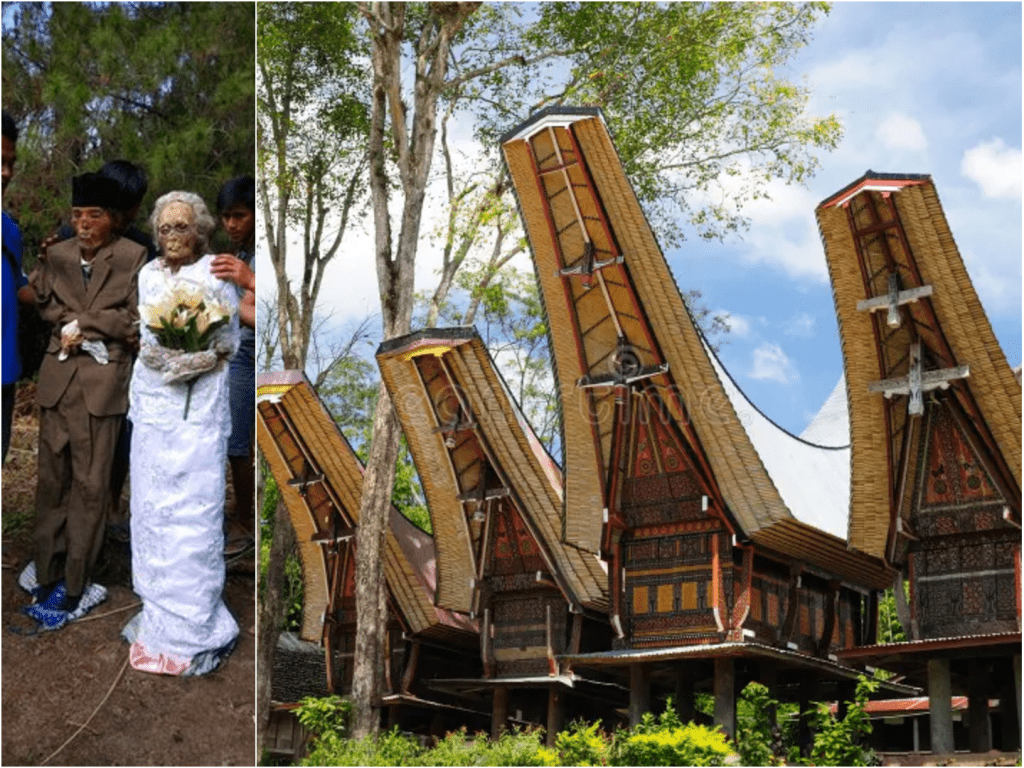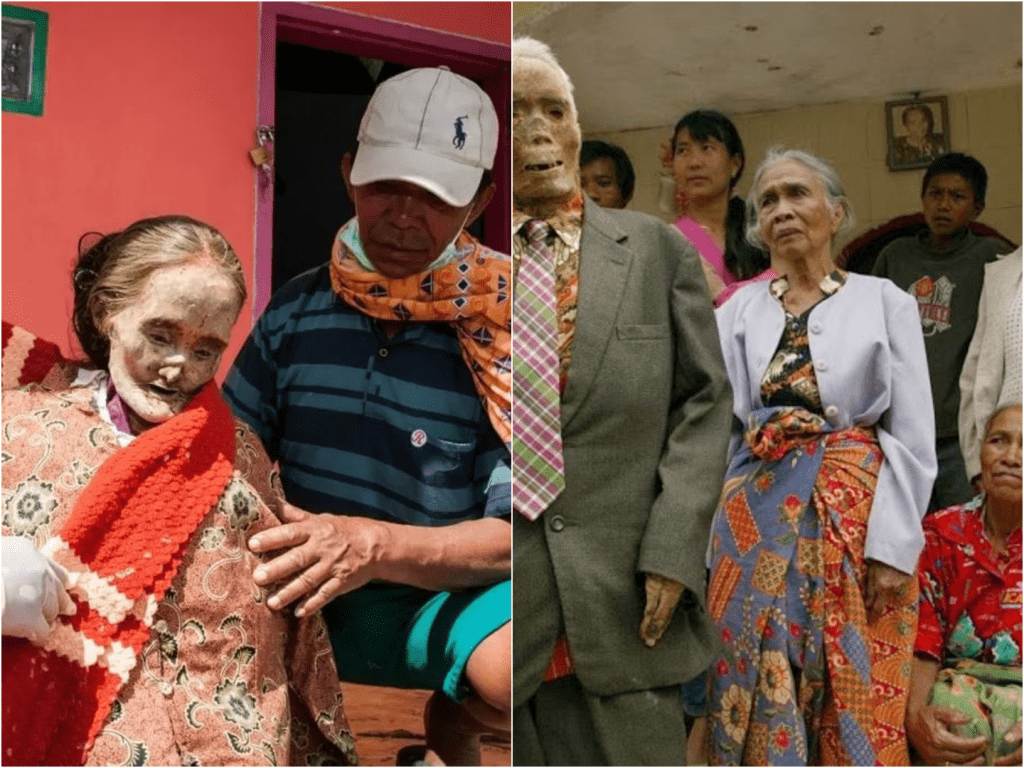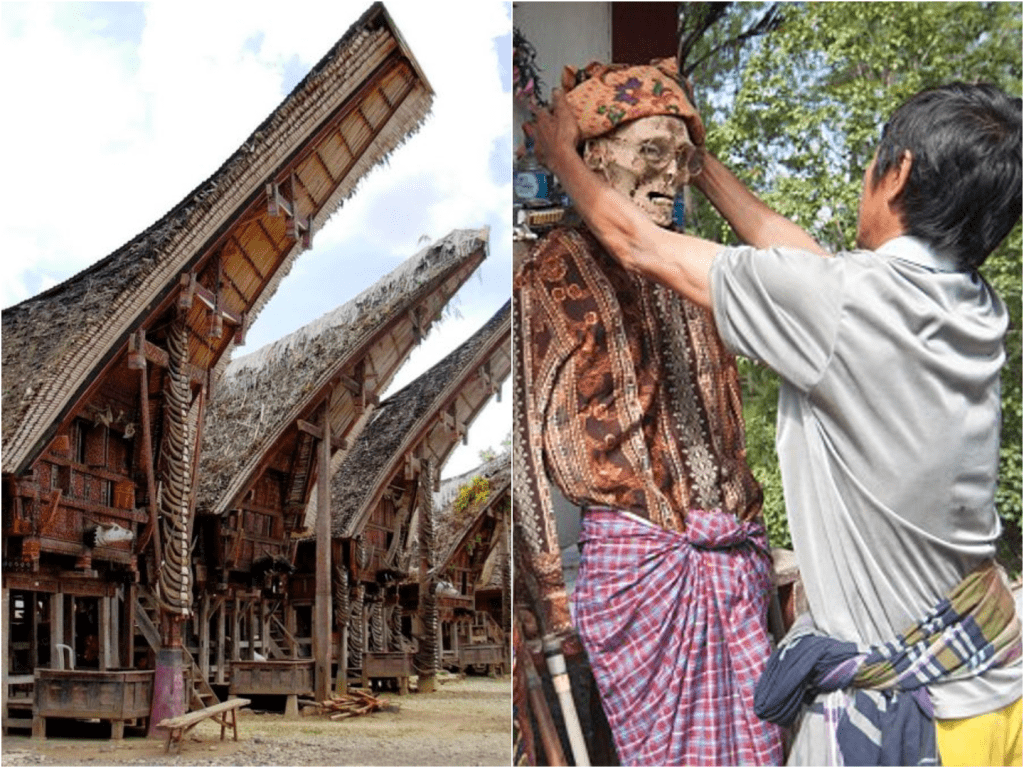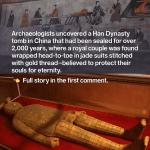In This Indonesian Village, Families Live with the Dead — And It Heals
When I first heard about villagers in Sulawesi who keep deceased loved ones at home for years, I thought it must be folklore. But in the highlands of Tana Toraja, Indonesia, this is everyday life. Here death is not a final goodbye—it’s woven into daily routine, caring, and even celebration.
In Toraja culture, when someone dies, they don’t bury them right away. The body is gently embalmed and placed in a family room, treated as if they were just sick. Families maintain hope for a proper funeral, and until they can gather resources—including thousands for buffalo and pigs—it doesn’t happen. So the deceased remain at home, surrounded by the living.

Imagine walking past a bedroom in a Toraja house and seeing your grandmother, lying peacefully in a wooden coffin. You might even bring her food or greet her before leaving. Every morning, someone in the family might change her clothes. I read about one family that prepared four meals a day for their loved one, fed them, and treated them like a continuing presence. It’s not morbid—it’s a way of keeping connection alive.
People say funerals in Toraja are more expensive than weddings or building a house. Traditionally, a funeral called Rambu Solo lasts days, includes buffalo sacrifices, processions, chanting, and formal ceremonies. Without enough buffalo, the funeral is delayed. While waiting, the person is called sick, not dead. Then, finally, when the ceremony happens, souls are said to journey to Puya—the other world.
One of the most touching traditions is Ma’nene, a ritual held every year around August. Families dig up the remains of ancestors, clean them, redress them in fresh clothes, and walk with them around the village. A Reddit post described it as a “Weekend at Bernie’s” moment—but locals say it’s a heartfelt way to show love and respect for ancestors. One villager said they talk to their dead about life updates, telling them family news, and sharing moments of the year. What felt eerie to me sounds like deep devotion to them.

There’s a powerful visual in The Guardian’s coverage: a child standing by a deceased grandparent lying next to them on the bed. It’s not horror—it’s family. It’s a child saying goodbye slowly, surrounded by loved ones. The dead are folded gently into daily life.
I spoke with a traveler who visited in 2024. They said, “It felt like everyone was part of a single long family story, no one was gone.” They described Toraja funerals as joyful and mournful at once—hundreds of buffalo are slaughtered and feasts shared, sacred dances performed, tau-tau effigies placed in cliffs or tombs to watch over the living. After burial, families still visit, dress the bodies in new clothes, and refresh the effigies in rituals.
Their view on death struck me. It’s not an end, but a process. Keeping bodies at home helps them carry the waiting, the care, the love. Funerals only conclude the physical journey—they don’t erase the bond. Even the youngest kids are part of this—some die before age two and are placed inside a tree trunk until nature eventually returns them.
Tourists come to Rantepao to witness funerals or even attend Ma’nene. Some are deeply moved, others surprised, but most agree it’s not grotesque—it’s a culture built on continuity, respect, and communal memory.

Reflecting on it, I realize we often rush death in modern societies—wake, funeral, burial, done. But in Toraja, death is slow. In the waiting room of home, it’s greeted, cared for, and honored. It’s honest and human.
This tradition teaches me something: memories keep people alive. Even when the body is gone, rituals, stories, change, and gentle care allow families to hold onto the people they love. That kind of patience and presence is powerful.
If ever I visit Tana Toraja, I’ll walk through tongkonan houses in the evening light, hear drums for the buried, and feel the strange comfort of bodies at home. It will feel strange, maybe foreign, but also familiar—as if saying love never ends at life’s border.
Death here isn’t a final curtain. It’s a chapter that folds into living, reminding us every day that our bonds are stronger than time.

Lena Carter is a travel writer and photographer passionate about uncovering the beauty and diversity of the world’s most stunning destinations. With a background in cultural journalism and over five years of experience in travel blogging, she focuses on turning real-world visuals into inspiring stories. Lena believes that every city, village, and natural wonder has a unique story to tell — and she’s here to share it one photo and article at a time.





